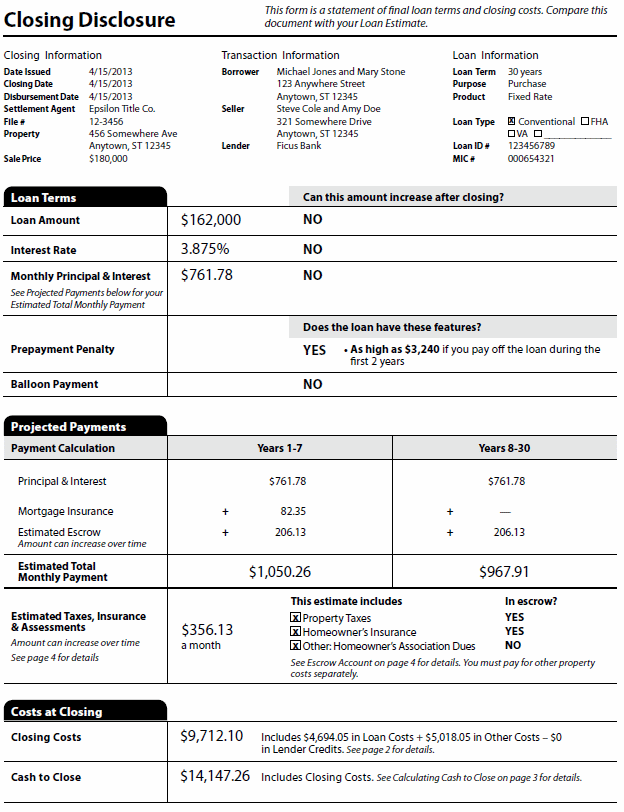As expected the Consumer Financial Protection Bureau (CFPB) has released the "easier-to-use" mortgage disclosure forms that were mandated by the Dodd-Frank Wall Street Reform and Consumer Protection Act. The new rule requiring the form was rolled out to coincide with a field hearing being held by the Bureau today in Boston.
The new "Know Before You Owe" forms will replace the existing federal disclosures in laying out the terms of a mortgage for a homebuyer. CFPB said they will "help consumers understand their options, choose the deal that's best for them, and avoid costly surprises at the closing table." Use of the new forms will begin no later than August 15, 2015.
Under previous rules that have been federal law for more than 30 years lenders were required to deliver two different and overlapping disclosures to potential borrowers within three days of receiving a mortgage application. At closing the law again generally requires two forms with what CFPB called duplicative and sometimes confusing information. Dodd-Frank recognized the need to simplify and streamline the information and charged CFPB with doing so.
The first new form, the Loan Estimate, is to be given to consumers within three days of receipt of their mortgage application. It replaces the early Truth in Lending statement and the Good Faith Estimate, and provides a summary of the key loan terms and estimated loan and closing costs. Consumers can use this new form to compare the costs and features of different loans.
The second form, the Loan Disclosure, must be given to the consumer three days before closing on a loan. It replaces the final Truth in Lending statement and the HUD-1 settlement statement, and provides a detailed accounting of the transaction.
The two forms use plain language and a design intended to make it easier for consumers to locate key information such as the interest rate, monthly payments, and costs required to close the loan. They also make it easier to compare the initial estimate on the first form with the final costs on the second.
The final rule regarding the forms requires their use by lenders, formalizes the dates for delivering the forms, and limits the extent to which the final deal can vary from the original loan estimate. The new forms are available in English and Spanish.
"Taking out a mortgage is one of the biggest financial decisions a consumer will ever make. Our new 'Know Before You Owe' mortgage forms improve consumer understanding, aid comparison shopping, and help prevent closing table surprises for consumers," said CFPB Director Richard Cordray. "Today's rule is an important step toward the consumer having greater control over the mortgage loan process."
CFPB says it conducted more than two years of extensive research, testing, and review to find out how best to disclose information in a way that consumers can understand. The Bureau received feedback from consumer testing, through the Bureau's website, from a small business review panel, through public comments on the proposed rule, and from other supplemental outreach. CFPB had a number of goals it hoped to achieve with the new forms:
- Help consumers identify risky loan features such a prepayment penalties, larger-than-usual periodic payments, and complicated loan structures.
- Help them understand both short- and long-term costs.
- Make clear what monthly payments will be initially and the potential minimum and maximum payments over the life of adjustable rate loans.
- Enable better comparison shopping both for loan terms and closing costs.
- Avoid costly surprises at the closing table by allowing easier comparisons between the estimated and final terms of the loan.
- Give consumers more time to consider choices without the pressure of the closing table.
- Limit closing cost increases.
A factsheet about the "Know Before You Owe" mortgage disclosures is available at: http://files.consumerfinance.gov/f/201311_cfpb_factsheet_kbyo_mortgage-disclosures.pdf.
The final rule is available at: http://files.consumerfinance.gov/f/201311_cfpb_final-rule_integrated-mortgage-disclosures.pdf.









